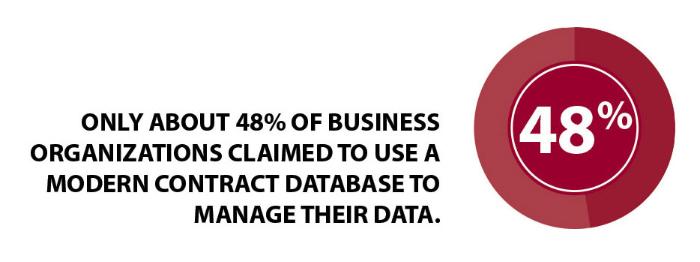
9 Best Practices for Procurement Specialists
Centralize Data | Use Outside Audits to Drive Re-Negotiations | Define and Communicate Performance Metrics | Integrate Contract Management Across Functions and Geographies | Establish Version Control | Automate Approval Process | Standardize Language, Terms, Clauses | Develop Custom Reporting Standards | Develop Contract Efficiencies
9 Best Practices For Procurement Specialists
Effective procurement and contract management strategy can save businesses a significant fraction of their total budget. Even well-run, efficient enterprises may capture millions in savings within a short time using contract management best practices.
Achieving contract management excellence means accessing, evaluating, and acting on large quantities of data. Although the task can be daunting, today’s technology tools can be combined with rigorous, repeatable practices that will help you capitalize on opportunities.
Let's consider nine essential aspects of success in contract management and procurement
1. Centralize Contract Management Data
In a survey from the Aberdeen Group, only about 48% of business organizations claimed to use a modern contract database to manage their data. Introducing a contract management database is the cornerstone of any forward-looking procurement strategy. By launching this system, you make a company’s wealth of contract-related information searchable and accessible to procurement specialists and stakeholders enterprise-wide.
In today’s technology-driven procurement landscape, a database is the only reliable way to compare contract performance over time and illuminate procurement opportunities as they arise. Begin by assessing what business intelligence and data visualization strategies are already in use in your enterprise – by leveraging existing IT, you could accelerate your roll-out. For example, if your company already has Enterprise Resource Planning in place, the functionality you need might come from a relatively inexpensive add-on.

2. Use Outside Audits to Drive Re-Negotiations
 As powerful as a contract management database is, most organizations lack the specialized expertise to painstakingly analyze every detail it makes available. A database will streamline recognizing and reporting on key trends, but most enterprises should consider using outside auditors or procurement specialists for any deep dive evaluations of existing contracts or procurement alternatives.
As powerful as a contract management database is, most organizations lack the specialized expertise to painstakingly analyze every detail it makes available. A database will streamline recognizing and reporting on key trends, but most enterprises should consider using outside auditors or procurement specialists for any deep dive evaluations of existing contracts or procurement alternatives.
Professional external auditors are well-versed in finding vendor errors, accounting mistakes, and other issues that might not be visible to your internal team. Wielded judiciously, a relationship with an external auditing firm can pay for itself rapidly by providing evidence to immediately reverse erroneous charges – and giving you much greater leverage at the negotiating table.
3. Define and Communicate Contract Performance Metrics
Clear metrics help you to identify under-performing contracts and catalyze action to improve them. The specific metrics that will be most important to your enterprise will vary according to your goals, industry, and market factors. Whatever the case may be, it’s crucial to ensure every procurement team member is aware of these metrics and they are applied consistently.
While management information systems can help you act on any issues that grow into strategic concerns, front-line staff are often the first to notice smaller problems before they develop into big ones. Designing a structured on-boarding process can help acclimate your new hires to the key issues. Documenting key performance indicators and occasionally re-training staff on them will support vigilance.
The United States Postal Service utilizes a standard list of measurable performance elements to gauge for contract management. Their performance metrics must clearly demonstrate quality, timeliness, client-supplier relationships, and cost control. These metrics can include:
- Completeness
- Cost
- Availability
- Capacity
- Reliability
- Flexibility
- Timeliness
- Responsiveness
- Security
- Standards
- Usability
- Accuracy
- Risk
- Safety
- Auditability
- Satisfaction
4. Integrate Contract Management Across Functions and Geographies
 Contract management is most effective when it’s visible as a strategic, enterprise-wide partnership. The central organization might be quick to adopt a database and adapt to its use, but what about those on the periphery? Unless contract management is integrated across the scope of operations, including all geographies and functions, it cannot deliver maximum savings.
Contract management is most effective when it’s visible as a strategic, enterprise-wide partnership. The central organization might be quick to adopt a database and adapt to its use, but what about those on the periphery? Unless contract management is integrated across the scope of operations, including all geographies and functions, it cannot deliver maximum savings.
This is another case where the procurement specialist may have to act as a change agent, advocating for systems that facilitate greater cooperation. If your organization has a broad geography, consider communicating with business unit leaders about the benefits of structured contract and procurement management. If opportunities to do so are limited, sound out the concept with more senior procurement or operations leaders who can inspire change: The contract savings sparked by best practices can make a persuasive business case.
5. Establish Version Control for Contracts
 Contracts are arguably the most important documents your business generates – so, it makes sense every precaution should be taken to make sure teams only use the latest versions. Tough version control practices should be put into place to ensure, from a practical perspective, only the reference version of each contract is available to stakeholders whose only role is to comply with their terms.
Contracts are arguably the most important documents your business generates – so, it makes sense every precaution should be taken to make sure teams only use the latest versions. Tough version control practices should be put into place to ensure, from a practical perspective, only the reference version of each contract is available to stakeholders whose only role is to comply with their terms.
To ensure previous contract versions are accessible only by the legal and compliance teams, integrate version control into your contract management system. Require end users to log in to review contract terms from the central repository rather than keep miscellaneous copies on all their own devices. This will protect you from liability by making internal contract errors less likely.

No Matter Your Business or Industry, Contracts Face Bottlenecks from Time to Time. These Issues Cannot be Solved Until the Issues are Identified;
However, it's not Always Obvious. Here are a Few Common Contract Bottlenecks that SpringCM Finds with its Clients:
 |
CREATING A NEW CONTRACT TAKES TOO MUCH TIME Without technology to automate your contract creation, adding and updating the various documents and clauses necessary can take up more time than necessary. |
|---|---|
 |
THE APPROVAL PROCESS TAKES TOO LONG Often, companies rely on emails to send contracts for signing or approval, which may be left unread for a period of time. |
 |
LACK OF VISIBILITY This not only makes it difficult to know if your process is too long, but it can also become a legal issue if an audit comes up. |
6. Automate Your Approval Process
Contract approval is the #1 source of bottlenecks in the contract management and procurement process. This is often a symptom of inefficient organizational structures: Too many decision-makers are given the opportunity to “weigh in” on contracts without being directly involved in the business processes they impact. Luckily, technology can streamline this significantly.
It might not be possible to cut down on the number of stakeholders who influence each contract, but you can use contract management technology to automate approval tasks. Once data systems are implemented and working together, contracts can be evaluated in seconds based on their terms and impact. This will allow at least some stakeholders to sign off instantly on contracts that meet their criteria.
7. Standardize Language, Terms, Clauses
 Everyone who interacts with contracts should be using the same terms to maximize clarity and efficiency. Unfortunately, since most stakeholders look at contracts exclusively from the perspective of their division or functional area, different stakeholders can end up talking over each other even when they have the same concerns.
Everyone who interacts with contracts should be using the same terms to maximize clarity and efficiency. Unfortunately, since most stakeholders look at contracts exclusively from the perspective of their division or functional area, different stakeholders can end up talking over each other even when they have the same concerns.
Standardizing terminology is your key to making sure everyone is speaking the same language – literally. Still, this is only one part of the process. You should also work with the legal team to standardize the wording of common contract clauses. This makes future contracts more uniform, allowing you to spot operational risk, liability issues, and vendor conflicts.
8. Develop Custom Reporting Standards
No matter what industry or market you’re involved in, odds are that C-level executives already use decision support systems – for example, custom business intelligence, data visualization and reporting apps. By integrating your strategic contract management data into those systems, you streamline reporting processes and ensure everyone is on the same page.
To build custom reporting, start by finding out which KPIs are most important to the high-level stakeholders in your organization. Although modern executive dashboarding is probably the most efficient reporting tool you can use, don’t overlook the power of a well-developed Excel or Word template. Any report can be effective if it clearly communicates key points quickly.
CONTRACT PERFORMANCE METRICS SHOULD ALIGN WITH CLIENT REQUIREMENTS, OF COURSE;
HOWEVER, THERE IS MUCH MORE TO CONSIDER WHEN SETTING YOUR ELEMENTS TO BE ASSESSED.
The United States Postal Service makes sure that their performance metrics also align with:
• Client strategies
• Postal Service strategies
• Most recent business justification
• Demand management strategy
• Logistics support plan
• Project plan
• Value chain map and analysis (performance metrics should support a focus on value-added activities away from non-value-added activities)
• Life-cycle support plan
• Investment recovery plan
• Performance-based contracting agreement
• Industry benchmarks
9. Define Leadership and Develop a Team Around the Key Aspects of Contract Efficiency
 Delegation is the key to effective leadership, allowing individual team members to build subject matter expertise and work efficiently when tackling complex problems. This is just as true in procurement and contract management as it is in other areas of business. Know your team well and delegate specific objectives to them, giving them complete ownership.
Delegation is the key to effective leadership, allowing individual team members to build subject matter expertise and work efficiently when tackling complex problems. This is just as true in procurement and contract management as it is in other areas of business. Know your team well and delegate specific objectives to them, giving them complete ownership.
Once you have a collaborative and communicative team, it’s time to launch continuous process improvement as part of your quarterly objectives. Since so much of contract management is easily quantified in terms of performance outcomes, there’s always room for improvement. Every quarter should see some progress in terms of speed, efficiency, accuracy, or cost-effectiveness.
Learn More About Pursuing a Graduate Degree in Acquisition and Contract Management
The Sooner You Start Driving Best Practices, the More You'll See
Taking a strategic approach to contract management and procurement is an effective way to drive down preventable costs for the enterprise. That said, no single approach or technology tool can realize all the benefits of best practices. Creating a truly world-class contract management function calls on you to utilize people, processes, and technology in an effective way.
Creating this kind of organizational change is often a long process that involves many stakeholders. In the quest for process improvement, procurement specialists and contract management professionals have one great advantage: Choosing to implement a single best practice will often create a strong business case for the rest – by catalyzing savings, enhancing efficiency and reducing contract risk.
If all nine best practices seem like a tall order, select one that best matches your goals and get started. Before you know it, the procurement and contract management team could be generating value for the organization like never before. And with an advanced degree in contract management, your expertise will only grow as you master skills and competencies in improving business performance.


 Give to Florida Tech
Give to Florida Tech